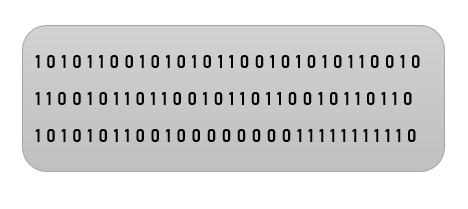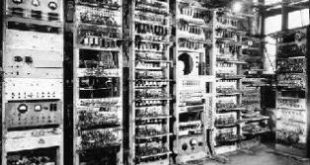At the heart of every computer’s functionality lies its ability to transform, process, and store information. To accomplish these tasks, computers rely on a fundamental language: binary. But how does a computer represent and understand data? In this article, we delve into the intriguing world of computer data representation and the various number systems that underpin it.
Information transformation and storing is the basic nature of the computer. Thus, a computer must be able to take input, process it and produce output. Here a question raised in our mind that is, how is the information/data representation in a computer? The data represents in the computer is in the form of Binary form means 0 zero’s and one’s.
The data/information everything is represented in the form of binary digits, in these case characters also represented in the form of binary digits. So we need codes for representing specific symbols are characters or numbers. International committee set some common codes for data representation. Those codes are named ASCII, EBDCDIC, ISCII etc. We need to represent numbers in binary and should be able to perform operations on these numbers.
Understanding Data Representation in Computers
In the realm of computers, information is king. Every computer must excel at taking input, processing it, and producing output. The question that naturally arises is, “How is information represented in a computer?” The answer lies in the binary form, a language composed of just two symbols: 0 and 1.

In the binary system, everything, from numbers to characters, is represented using combinations of these binary digits. To facilitate this representation, international committees have established standardized codes such as ASCII, EBCDIC, and ISCII. These codes provide a way to represent specific symbols, characters, or numbers in binary format, ensuring consistency and interoperability in data exchange.
The Role of Number Systems
To perform arithmetic operations on data, we first need to understand number systems. Computer science commonly uses four primary number systems: octal, hexadecimal, decimal, and binary. These systems play a vital role in representing data in a quantitative form.
Definition of Number system: A number system of base (also called radix) r is a system, which has r distinct symbols for r digits. . A string of these symbolic digits represents a number. To determine the value that a number represents, we multiply the number by its place value that is an integer power of r depending on the place it is located and then find the sum of weighted digits.
Let’s take a closer look at these number systems:
Decimal Number System in Computer Data Representation
The decimal number system, familiar to us all, consists of ten digits: 0, 1, 2, 3, 4, 5, 6, 7, 8, and 9. Each decimal number can be represented as a string of these digits. The radix, or base, of the decimal system is 10 because it has ten distinct symbols.Here total decimal digit count is 10 so the radix of this system is 10.
For example:
- 543 = 5 x 102 + 4 x 101 + 3 x 100 p
- 789.56 = 7 x 102 + 8 x 101 + 9 x 100 + 5 x 10-1 + 6 x 10-2
In these equations, the power of 10 represents the place value of each digit.
Number systems are octal, hexadecimal, decimal and binary. These are commonly used number systems. These number systems are used to represent the data in Quantitative form.
The Significance of Computer Data Representation
Understanding data representation and number systems is fundamental to computer science and programming. It enables programmers to work seamlessly with data, perform operations, and ensure compatibility across different systems and platforms.
In the world of computer science, precision and consistency are paramount. Whether you’re working with binary code, decimal numbers, or IP addresses, the ability to represent and manipulate data accurately is the bedrock of modern computing.
In Conclusion – Computer Data Representation
In the digital realm, where every bit matters, the way data is represented is crucial. Computers rely on binary code and standardized number systems to interpret and process information. This enables them to perform complex operations and communicate effectively over networks.
As you delve deeper into the world of computer science, remember that beneath the user-friendly interfaces and sleek hardware lies a foundation built on binary digits and the elegant simplicity of number systems. These fundamental concepts are the essence of modern computing, and they empower programmers and engineers to shape the digital world we inhabit today.
Other article on Computer Organization and others are read here.
Data Representation in computers wiki is here.
 IT2EDU Empowering Education Through Technology
IT2EDU Empowering Education Through Technology

